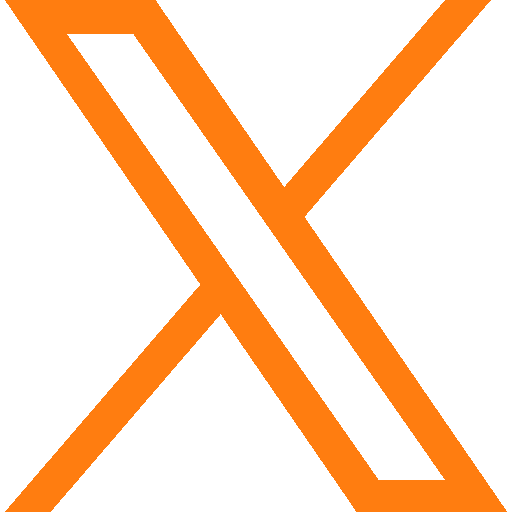50+ Digitally Native Companies
E-commerce has never been bigger, and global e-commerce sales are expected to hit $4.9 trillion by 2021.
To a casual observer, e-commerce may seem like a can’t-miss venture. Hundreds of successful e-commerce brands are growing each year, managing to attract new customers while eschewing brick-and-mortar buildings.
However, e-commerce businesses can teeter between profitability and going under, and depend heavily on a scalable supply chain to meet the bottom line. Keeping customers happy and coming back is critical, and digitally native companies do so “by accurately forecasting demand, flexibly routing orders to ship from warehouses closest to the customers, and automating the supply chain.”
No universal definition for “digitally native company” exists. The term “digital native” was first used in 2001 to describe individuals who grew up using computers and the internet — essentially, people who have only lived in a digital world.
Using this definition, a digitally native company is a brand that has only existed in the digital world, meaning one that exists primarily, or entirely, online.
Digitally native brands are usually e-commerce businesses, meaning online sales make up most or all of their sales. Digitally native brands also tend to focus on attracting digital natives, doing so by appealing to their individual concerns.
Warby Parker, considered a pioneer in B2C e-commerce, first attracted shoppers with the social mission “buy a pair, give a pair” of sunglasses. Over time, they realized that high-quality, well-fitting sunglasses at an affordable price point were what most shoppers wanted. Warby Parker combined these concepts and has grown into one of the most recognizable digitally native brands.
By operating only online, digitally native brands can avoid paying for brick-and-mortar stores and associated costs. However, they depend on quick, efficient shipping to retain their shoppers and attract new business.
While no two are alike, these companies all have one thing in common: digital nativeness.

Adore Me creates high quality bras, sleepwear, and lingerie for women of all shapes and sizes. The key to Adore Me’s brand is the premium fabrics used for every sizing option.

Branded as the “World’s Most Comfortable Shoe,” Allbirds uses sheep wool from New Zealand for all its designs. Allbirds also uses mostly recycled materials, so they’re constantly sourcing materials from around the world.

Alo embraces the active lifestyle of yogis, both on and off the mat. This brand’s yoga clothing was created to be both the perfect clothes for a yoga workout while also looking great for casual, comfortable wear.

Instead of buying low-quality clothing sourced from around the world, the creators of American Giant wanted to offer Americans high-quality clothes made by other Americans. To keep their overhead low, American Giant uses smaller supply chains to directly reach the buyer.

The world is becoming more connected, but Away noticed that suitcases and luggage didn’t meet the needs of the modern traveler. Away’s suitcases are thoughtfully constructed to meet TSA regulations, and all Away sales includes a donation to Peace Direct.

In areas like New York, the birthplace of AYR, each season comes with wildly different weather. Instead of owning clothes for each season, AYR offers denim jeans that fit comfortably year round.

Keeping up with trends is hard, so BaubleBar designs and ships jewelry and accessories that reflect modern trends. With new accessories being offered regularly, shoppers always have something new to try.

Birchbox is an excellent example of kitting at work. Shoppers receive a monthly beauty box that includes different products and brands. Items are sourced from all over, so Birchbox buyers get to try new brands regularly.

Bombas’ name is derived from the Latin word for “bee,” and they certainly stay busy as a bee. For every pair of Bombas sock sold, a pair of socks is donated to a homeless shelter.

Instead of guessing what clothes might fit your styles, Bombfell gives you a quiz to determine the perfect clothes for your personality. The clothes are then shipped to you, and if you don’t like them, you have one week to send them back free of charge.

Bonobos was started for a simple reason: the founders couldn’t find pants that fit, so they decided to make their own. Today, Bonobos sells fitted pants, shirts, and suits that fit the natural shape of your body.

Most people want bedding and pillows that are comfortable and don’t break the bank. By sourcing high-quality materials at a low relative cost, Brooklinen is able to provide popular bedding at an affordable price.

An entirely e-commerce company, Carbon38 owns their label and creates unique, contemporary clothing. Technically activewear, Carbon38’s clothing is best known for its bold looks.

One of the most famous examples of digital native disruption, Casper ships boxed mattresses to your door. Once opened, the mattress expands to its normal size. Casper is able to provide affordable mattresses by cutting out the middleman — mattress stores.

What began as a solely digital brand selling shorts has expanded to include brick and mortar stores. However, Chubbies is still an excellent example of how a digitally native brand used social media to affordably drive sales.

Not all bodies fit in mass produced clothing, so Dia&Co created clothes that fit women no matter what their size is. Clothes are shipped to your door, and making returns is incredibly easy.

Founded by actress and South native Reese Witherspoon, Draper James sends the style and comfort of Southern Living to shoppers around the world. Draper James has some brick and mortar stores, but their online store still dominates.

ELOQUII originally closed its doors in 2013, but the heavy support from customers lead ELOQUII to re-open its doors. The business’ clothing comes in all sizes for all women, all of which are designed to have a perfect fit.

Why continually shop for new clothes when you love the ones you have? Everlane creates clothes that are meant to last and look good year after year. To keep the high-quality clothes affordable, Everlane skips the traditional retail process and saves tons of money.

Clothing designed by Fashion Nova is meant to make you stick out in the best way possible. Fashion Nova embraces social media influencers and has become one of the fastest growing and most searched clothing brands in the nation.

The fashion industry has a profound negative effect on the environment, so Frank and Oak created its business model with the intention of making the smallest environmental impact possible. As Frank and Oak’s supply chain increases, better sustainable products are sourced.

Everyone’s hair is different, and Function of Beauty lets shoppers customize their hair care products. Offering customized hair care products would be nearly impossible if Function of Beauty wasn’t a digitally native business.

Glossier creates skin care and beauty products that are made for people, and not the other way around. With tons of options available, shoppers can find the perfect products for their skin and style.

The sneaker business has exploded, but sneakerheads didn’t have a safe place to buy and sell rare sneakers — that is, until GOAT. GOAT authenticates sneakers, so shoppers know they’re getting the real thing.

Harry’s was created to give men an easier way to buy simply-designed razors for shaving. Instead of trying to pick the right razor at a store, Harry’s sends razors right to your door.

Kopari creates beauty products that are made with 100% organic coconut oil sources from small farms in the Philippines. The quality products depend on a consistent inflow of coconuts from Kopari’s provider.

Mountain hunting equipment needs to withstand the harsh conditions of the wild, but the quality materials needed runs up the cost of products. To keep hunting equipment costs low, KUIU eliminated the retailer and started sending quality products directly to shoppers.

Instead of getting hair coloring products from the store, Madison Reed shoppers can choose the perfect color for their hair and get the product shipped to their door. Madison Reed also created its own permanent hair coloring made without ammonia, PPDs, phthalates, and gluten.

Italian-crafted shoes are always in style, but the high price tags usually associated with the shoes are not. To sell affordable Italian shoes around the world, M.Gemi partners with small Italian workshops to get the shoes straight from the source.

Women in the workplace have a hard time finding work clothes that look good and presentable. So, M.M.LaFleur began designing and delivering professional women’s clothing. While M.M.LAFleur has store locations, online shoppers have access to more clothing options while receiving guidance from a stylist.

Buying clothes that are in-season means you only have a limited time to wear them after the purchase. To maximize your time with the hottest clothes, Moda Operandi lets anyone preorder upcoming seasonal looks, bringing new, luxury clothes straight to your door when they’re released.

Morphe brands itself as a badass, bold beauty and makeup brand, but they began as a creator and distributor or affordable, professional-quality brushes. The business has gradually scaled larger, adding more products to its extensive line.

The watch industry has always been run by giants, charging an arm and a leg for fashionable watches. After a successful round of crowdfunding, MVMT began producing their own affordable watches that match the quality and class of the expensive counterparts.

Creating clothes for the “Recreationalist,” Outdoor Voices has created its own niche for people who want clothes that are casual, athletic, comfortable, and fashionable. All products are made at equitable factories and the supply chain intentionally produces the smallest environmental impact possible.

The Parachute founder launched the business as an online-only B2C brand back in 2014 and has since exploded in popularity. Parachute provides shoppers with a convenient way to find great items for around the home.

Kids may not be online shoppers, but growing children are constantly in need of new clothes — and parents are in need of an affordable way to get them. Created by two mothers, Primary lets parents find the perfect clothes for kids ages 2-12 and have them shipped right to their door.

Marriage and family are two of QALO’s values, so they decided to create affordable, customizable rings and bands. More recent additions to their collection include baby blankets and teething necklaces (for their long-time shoppers that are starting families of their own).

Based in Australia, Quay creates sunglasses — or as they call them, “sunnies” — inspired by musicians and artists that make the rounds to festivals. This digitally native brand has done such an excellent job designing their sunglasses that celebrities have forgone expensive brands and picked up Quay sunnies instead.

Instead of just offering a variety of handbags, Rebag offers you money for handbags you no longer use. You just take a picture, accept their quote, and send in the bag to receive payment. Any bags purchased through Rebag can be exchanged for near the full value up to six months after the purchase.

Rockets of Awesome sells kids clothes that emphasize self-expression, all while making shopping easier for parents with a convenient online catalog. What’s best is the clothes are delivered in a kitted box each season, so your kids will keep getting new, stylish clothes.

Rothy’s takes recycled plastics and turns them into brand new flats. The plastic is sourced from all over, but the supply chain decreases the cost of finding new materials while reducing the amount of plastic that ends up in the ground.

The creator of SAXX was bearing the cold Canadian weather when he realized there had to be a better way to make men’s underwear. The result is a unique underwear design made for men of all sizes with one goal in mind — comfort.

Best recognized for their “Punks & Poets” that wear and support the brand, Stance gives shoppers the option to select individual clothing items or subscribe to a custom plan to receive mystery items on a regular basis.

With more than 5 million users, TechStyle Fashion Group is one of the top producers of athleisure clothing. Also, with 17 million Facebook followers, TechStyle also has one of the widest reaches of a digitally native brand.

Network security is a big deal and Tempered Networks addresses this issue with grace and ease. As an integrated software and hardware company they are able to create a zero-trust data layer where each node is added one at a time to create an easily managed and robust iiOT security platform.

From prom to weddings, tuxedo shopping is a pain. So, The Black Tux lets shoppers input some measurements, pick a style, and have a custom fit tuxedo shipped to their door. Once done with the tux, shoppers can choose to keep it or send it back.

The RealReal takes luxury consignment shopping and selling to a whole new level — the internet, that is. All products are certified luxury, so you can rest assured that anything you purchase is the real thing.

Designed using millions of measurements, ThirdLove’s bras are branded as the most comfortable and best-fitting bras available. The fact that they carry more inventory than most competitors and ship to your door makes it easy to find the perfect fit, too.

True Botanicals products are only made from certified organic and wild-harvested ingredients, meaning they source their materials from all over. Each product is also made to have the smallest environmental impact possible.

Clothing is often made with some arbitrary standard in mind, leaving millions of unique people without stylish and accessible clothing. Universal Standard aims to set a new standard for women in America, making their vast inventory possible by cutting out brick and mortar stores.

UNTUCKit has plenty of physical locations today, but the business originally started entirely online, letting shoppers buy and return clothes all from the comfort of their home. Many of their sales are still online which keeps their costs and product prices low.

Warby Parker is one of the best-known digitally native brands. What began as an effort to provide affordable glasses became the startup that competes with the largest eyeglass companies in the world — and is winning.

Another digitally native company that focuses on eyeglasses, Zenni Optical has expanded from prescription glasses to include sports goggles, non-prescription sunglasses, sport sunglasses, and much more.
Digitally native brands depend on supply chains in a variety of different ways. From sourcing goods to fulfilling generous return policies, digitally native companies use their supply chains for the following purposes.
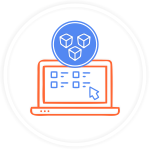
Supply From Manufacturers
If an e-commerce brand is selling a unique good, that good needs to be produced.
Supply chains work with manufacturers to source products for digitally native brands. Margins are critical, though, and manufactured products may not keep up with demand. Each product also represents the digitally native company, so product quality needs to consistently meet a minimum standard.
Some digitally native brands, such as Harry’s, have gotten around this issue by purchasing the factory that produces its goods. This helped Harry’s supply chain consolidate, and now they only use a third-party logistics partner (3PL) to ship goods and source materials.

Global Sourcing
While some e-commerce businesses may own their own factory, materials still need to be sourced.
Sourcing is critical for many digitally native brands. Allbirds uses 100% wool from sheep in New Zealand to produce their clothing. Kopari sources the coconut oil used in its beauty products from the Philippines.
Scaling sourced materials requires digitally native brands to have either a connection with the producer or a scalable 3PL.
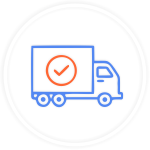
Fulfillment and Distribution
Fulfillment and distribution are arguably the most important services a 3PL provides to digitally native companies.
Fulfillment — the process of storing your goods in a warehouse, processing online orders, packing the products, and moving them out of the warehouse — requires meticulous tracking of online information.
Different digitally native companies require different types of fulfillment, too. The types of fulfillment services offered by Hollingsworth include:
- Crowdfunded
- E-commerce
- Subscription-based
- Retail
- Marketplace
The size and structure of a digitally native company determine which fulfillment services are needed.

Shipping
After accurately fulfilling orders, shipping and delivery come next. A survey conducted by SupplyChain247 found that 93% of consumers believe shipping is an important part of the buying process, so digitally native brands take this process seriously.
Unfortunately for digitally native brands, Amazon’s free two-day shipping (and incoming one-day shipping) has only exacerbated the need for fast, efficient shipping. To remain competitive, some digitally native companies have started offering free or expedited shipping.
However, offering better, faster shipping strains supply chains, and doing so at no cost adds even more pressure. Consumers’ growing demand for better shipping may be reason enough for digitally native brands to outsource distribution to a 3PL.
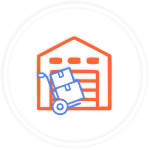
Warehousing
E-commerce demand forecasting calls for huge spikes in inventory during the holiday season, and every industry has its own set of other seasonal upturns and downturns. Scalable warehousing is a must.
Warehouses operated by 3PLs are designed to scale with your business while keeping warehouse inventory (and the associated costs) as low as possible. Also, warehouses operated by 3PLs use supply chain management software and tools such as RFID tagging to keep track of inventory.
Outsourcing warehousing can also increase your product’s global reach. Many logistics companies own multiple warehouses, reducing shipping times for the area.
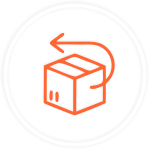
Reverse Logistics
Casper disrupted the mattress industry by shipping high-quality mattresses conveniently stored in small boxes right to people’s doors. The best part? The mattresses come with a 100-day trial period, during which consumers may send the mattress back for a full refund.
Lenient return policies are common for digitally native brands, but running returns, part of reverse logistics, can be costly. A return essentially covers the cost of shipping a product both ways, reimburses the product, and sees companies eat the cost of processing the entire order.
Reverse logistics should also be as smooth as possible for the consumer. Returns are part of customer service, and with Generation Zers expecting to return over 75% of the items they purchase online, digitally native companies will need fast, effective return policies if they hope to sell goods to the upcoming generation.
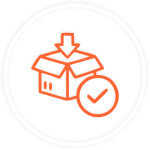
Kitting
Subscription-based box service companies such as Frank and Oak ship boxes of clothing to customers on a regular basis. These boxes contain different products and change regularly.
The process of selecting individual items and sending them in one box is called kitting. Kitting is used by various digitally native companies, including many that aren’t included in our list.
Along with keeping shipping costs low by only sending one package, kitting also reduces potential shipping errors and decreases waste, making companies more sustainable.





